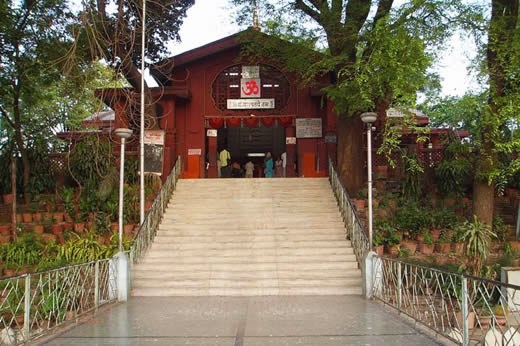Pune is the eighth largest metropolis in India and the second largest in the state of Maharashtra. It is situated 560 metres (1,837 feet) above sea level on the Deccan plateau at the right bank of the Mutha river. Pune city is the administrative headquarters of Pune district and was once the centre of power of the Maratha Empire.
Pune is known to have existed as a town since 847 AD. It was the first capital of the Maratha Empire under Chhatrapati Shivaji Raje Bhosale. In the 18th century, Pune became the political centre of Indian subcontinent, as the seat of Maratha Peshwas who were the prime ministers of the Maratha Empire.
Pune is the cultural capital of Maharashtra. Since the 1950-60s, Pune has had traditional old-economy industries which continue to grow. The city is now also known for Manufacturing, Automobile, Government & Private sector Research Institutes, Information technology (IT) and Educational, Management,Training institutes that attract migrants, students and Professionals not only from India but also students from South east Asia, Middle East and African countries.
Major tourist attractions
Shaniwar Wada :
Shaniwar Wada was the palace of the great rulers Peshwa Dynasty in Pune. The structure was built by the Peshwa Baji Rao in 1730. The Palace was destroyed in a big fire in 1827; the mammoth structure of the walls survived the fire. Shaniwar Wada stands testimony to the Maratha culture and its architectural design shows influences of Mughal style and features of Maratha artistic styles too. The 21 feet tall massive door of the palace known as Delhi Darwaza is one of the remains of the grand old Palace.
Dagadusheth Halwai Ganapati Temple:
The temple was founded in 1893 by Dagadusheth Halwai, a sweetmart seller
who became a wealthy businessman. Halwai had lost his son the previous
year, and at the request of his guru created murtis (image of a deity)
of Ganesha and Dattatreya. He later established the Halwai Ganapati
Trust.Bal Gangadhar Tilak, during the British Raj, gave a public form to
the Ganesh festival celebrations as a way of getting around an order
that barred public meetings
Raja Dinkar Kelkar Museum :
Raja Dinakar Kelkar Museum is located at the busy Bajirao Road in the
heart of the Pune city. This museum displays a variety of artefacts
which showcases the vastness and diversity of culture of the country and
people. The Museum houses many items collected by Dr. D. G. Kelkar. The
spectacular museum offers unique exhibits like the foot scrubber in the
form an elephant-shape, images of Lord Ganesha, and a brass scorpion
having a secret lock system. 'Mastani Mahal' which was reconstructed in
the museum is a major attraction here. It also exhibits 20th century
pottery, paintings of 17th century and carved doors of temples and
palaces. It is a museum which is worth a visit.
Saras Baug :
Saras Baug constructed by Nanasaheb Peshwa is located against the
scenic background of Parvati Hills. The imposing garden is a popular
relaxation spot and is exquisite with elegant fountains and lush green
lawns. The garden houses a renowned temple constructed in 1774 by Madhav
Rao Peshwa. The temple is dedicated to Lord Ganesha and there is a
Ganesh Murthi Museum, enclosing large number of Ganesh statues. Saras
Garden has been used by citizens of Pune as a walking and jogging track
and it also serves as a beautiful hangout for the populace during the
weekends and evenings.
Parvati Hill :
Parvati hill is a picturesque spot perched atop Pune city. Parvati Hill
Temple, believed to be built during the 17th century, is an important
Hindu religious destination here. It enshrines the idols of Goddess
Parvati, Lord Ganesha, Lord Vishnu, Devateshwar and Lord Karthikeya.
This temple was solely used for the prayers by the Peshwa rulers in
bygone era & was only later opened to the public. Steps with
artistic stone work of the Maratha's lead to this hill temple. The
Parvati Hill is an ideal location for trekkers. Nearby attractions
include Parvati Museum enclosing old manuscripts, rare coins, weapons,
the Sati Monument and Vetal Chabutra.
University of Pune:
University of Pune,
one of the premier universities in India, is positioned in the North-western
part of Pune city. It occupies an area of about 411 acres. It was established on
10th February, 1949 under the Poona University Act. The university houses 46
academic departments. It is popularly known as the 'Oxford of the East'. It has
about 307 recognized research institutes and 612 affiliated colleges offering
graduate and under-graduate courses.
The university attracts many foreign students due to its excellent facilities. It offers good accommodation facility. There is a provision of hostel for the students. There is a well-stocked library containing plenty of books regarding various subjects. The university offers different scholarships to the students. The university conducts seminars and conferences for the students.
The university attracts many foreign students due to its excellent facilities. It offers good accommodation facility. There is a provision of hostel for the students. There is a well-stocked library containing plenty of books regarding various subjects. The university offers different scholarships to the students. The university conducts seminars and conferences for the students.
Sinhagad is a fortress located roughly 30 kilometres southwest of the city of Pune, India. Previously called Kondhana , the fort has been the site of many important battles, most notably the battle of Sinhagad in 1670. It was also strategically located at the centre of a string of other forts such as Rajgad, Purandar and Torna.
Perched on an isolated cliff of the Bhuleswar range of the Sahyadri Mountains, it is situated on a hill rising 1312 metres above sea level. Given natural protection by its very steep slopes, the walls and bastions were constructed at only key places; it has two gates – the Kalyan Darwaza in the south-east and the Pune Darwaza in the north-east.

